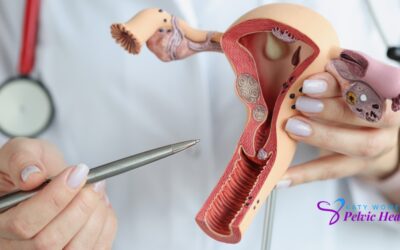Pelvic organ prolapse, a disorder in which one or more pelvic organs droop or sag out of place, affects more than 40% of women. Your uterus, bladder, bowel, vagina, urethra, and rectum are all considered to be pelvic organs. As the prolapse develops, these organs may drop into the vaginal canal or out of the vaginal opening.
You don’t have to accept it as a necessary aspect of life even though it is frequent. Our specialists can assist you if you are displaying any pelvic organ prolapse symptoms.
In addition to that, we will talk about all the additional symptoms, causes, and treatments in this article. So, stay tuned!
Table of Content
● What is pelvic Organ Prolapse?
● Symptoms of POP
● Causes behind POP
● Treatment
What do you understand about Pelvic Floor Disorder?
A collection of muscles known as the “pelvic floor” creates a sort of hammock-like structure across the pelvic opening. Normally, the pelvic organs are held in place by these muscles and the tissues that surround them. Your bladder, uterus, vagina, small intestine, and rectum are among these organs.
These tissues and muscles can experience troubles from time to time. Some women experience problems with their pelvic floors after giving delivery. Furthermore, pelvic organ prolapses and other pelvic floor diseases are more prevalent in older women.
One or more of the pelvic organs may stop functioning adequately when pelvic floor diseases arise. The following conditions are linked to abnormalities of the pelvic floor:
● Pelvic organs prolapse.
● Urinary incontinence
● Anal incontinence
Pelvic Organ Prolapse: What Is It?
Organ drooping or descent is referred to as “prolapse”. Any prolapse or drooping of the following pelvic floor organs is referred to as pelvic organ prolapse:
● Bladder
● Vagina
● Uterus
● Small intestine Rectum
If these organs descend into or outside of the vaginal canal or anus, they are known to prolapse. They may be referred to in the following ways:
The most prevalent condition is cystocele, which is a protrusion of the bladder into the vagina.
A prolapse of the urethra, the tube that conducts urine, is known as a urethrocele.
1. Abdominal prolapse.
2. Vaginal prolapse: The vagina protrudes.
3. Enterocele: prolapse of the small bowel.
4. Rectums prolapse: Rectocele
What are the different Types of Pelvic Prolapse?
Following are some of the most common categories of Pelvic Organ Prolapse:
A prolapsed bladder
A bladder prolapses, also known as an anterior prolapse or cystocele, happens when the wall between your bladder and vagina stretches and weakens.
The bladder sags and presses towards your vagina because of the wall around your bladder deteriorating. As a result, you can have urine retention and a persistent urge to urinate. You might also have trouble emptying your bladder.
Abdominal prolapse.
Rectocele and posterior vaginal prolapse are other names for rectal prolapse. A bulge in your vaginal wall results from the disorder, which is brought on by a weakening of the fascia, the fibrous tissue that acts as a barrier to separate the rectum from the vagina.
Numerous health issues, particularly those that put strain on your pelvic floor like chronic constipation, a persistent cough, pregnancy, and childbirth, can raise your chance of having a rectal prolapse.
Even while minor bulges rarely hurt and may not cause any symptoms, it is still necessary to have it checked by a doctor, especially if it starts to protrude and become unpleasant.
Large bowels prolapse.
Enterocele, a type of POP, is when the small intestine prolapses into the lower pelvis and presses against the top of the vagina, creating a bulge.
Uterine prolapse.
Uterine prolapse, like other types of POP, is brought on by situations and activities that put pressure on your pelvic floor.
The tissues and muscles that maintain the uterus in place weaken when there is too much pressure on your pelvis. This enables the uterus to budge down into your vagina or delivery canal from its usual position.
The following categories of uterine prolapses exist:
● Grade 1: The uterus has somewhat drooped, however it may not be apparent. No symptoms exist.
● Grade 2: The cervix (neck or point of the womb) is visible at or just outside the vaginal entrance, and the uterus has receded deeper into the vagina.
● Grade 3: The uterus has largely passed through the vaginal opening.
● Grade 4 – Procidentia, where the entire uterus has slipped through the vaginal entrance.
What causes prolapse of the pelvic organs?
Muscles, ligaments, and connective tissues make up the pelvic floor. Your pelvic floor muscles lose their ability to support your pelvic organs when they are weak or injured, which causes the organs to droop from their natural position in your body.
Your pelvic muscles could deteriorate because of:
● Aging: Due to hormonal changes (estrogen loss) during and after menopause, pelvic floor issues become more prevalent as you become older.
● Pregnancy and childbirth: Childbirth’s strain and stretching are a risk factor that can eventually result in prolapse.
● The surgical removal of the uterus, or hysterectomy, carries the risk of vaginal prolapse.
● Obesity: Impacts the muscles and organs of the pelvic floor by placing pressure on the lower abdomen and pelvis.
● Heavy lifting, persistent coughing, and chronic constipation all put strain on the pelvic floor muscles, weakening them.
● Genetics: You may be more susceptible to experiencing pelvic organ prolapse if a member of your family did.
What do the symptoms of pelvic organ prolapse?
Although prolapse does not pose a life-threatening hazard, the symptoms can be unpleasant and have an impact on your quality of life. In the morning, symptoms could be minimal, but they get worse as the day goes on.
The following are typical signs of pelvic organ prolapse:
● Your pelvic organs may feel heavy or under pressure.
● a sensation that something is escaping from your vaginal opening.
● observing a protrusion or “ball” of tissue from your vagina
● Repeated urinary tract infections (UTIs) or bladder infections.
● feeling as if your bladder is still partially full.
● discomfort if the uterine tissue protrudes out of the vaginal opening.
● leaks of stool or urine
● lower-back pain
● Constipation
● Sexual discomfort
When to see a doctor
You might not need medical care if you don’t have any symptoms or if the prolapse is minimal and doesn’t bother you.
However, altering your way of living will probably still be beneficial.
These consist of:
● if you’re overweight, losing weight.
● avoiding strenuous lifting
● Constipation prevention and treatment
If your symptoms don’t go away with time, you can call your nearest doctor for a routine checkup!
Reference
https://www.webmd.com/women/pelvic-organ-prolapse
https://www.advocatehealth.com/health-services/womens-health-center/pelvic-health/pelvic-organ-prolapse



